You can use set_index with unstack for reshaping, then ffill for add missing values and last reshape to original by stack:
df = df.set_index(['name','value_old','reticle','test','cell_rev'])
.unstack()
.ffill()
.stack()
.reset_index()
print (df)
name value_old reticle test cell_rev value_new
0 s 0x8E A28 default CR1 0x8C
1 s 0x8E A28 default CR3 0x8E
2 s 0x8E A28 etlc CR1 0x8C
3 s 0x8E A28 etlc CR3 0x8E
EDIT by comment:
Use merge by subset df1 created by boolean indexing and then fill NaN values by combine_first or fillna:
df1 = df.ix[df.test == 'default']
print (df1)
test name value_old reticle cell_rev value_new
0 default s 0x8E A28 CR1 0x8E
1 default s 0x8E A28 CR3 0x8C
df2 = pd.merge(df, df1, how='left', on=['name','reticle','cell_rev'], suffixes=('','1'))
print (df2)
test name value_old reticle cell_rev value_new test1 value_old1 \
0 default s 0x8E A28 CR1 0x8E default 0x8E
1 default s 0x8E A28 CR3 0x8C default 0x8E
2 etlc s 0x8E A28 CR1 0x44 default 0x8E
3 etlc s 0x8E A28 CR3 0x44 default 0x8E
4 mlc s 0x1E A28 CR1 NaN default 0x8E
5 mlc s 0x1E A28 CR3 NaN default 0x8E
6 slc s 0x2E A28 CR1 NaN default 0x8E
7 slc s 0x2E A28 CR3 NaN default 0x8E
value_new1
0 0x8E
1 0x8C
2 0x8E
3 0x8C
4 0x8E
5 0x8C
6 0x8E
7 0x8C
df['value_new'] = df2['value_new'].combine_first(df2['value_new1'])
#df['value_new'] = df2['value_new'].fillna(df2['value_new1'])
print (df)
test name value_old reticle cell_rev value_new
0 default s 0x8E A28 CR1 0x8E
1 default s 0x8E A28 CR3 0x8C
2 etlc s 0x8E A28 CR1 0x44
3 etlc s 0x8E A28 CR3 0x44
4 mlc s 0x1E A28 CR1 0x8E
5 mlc s 0x1E A28 CR3 0x8C
6 slc s 0x2E A28 CR1 0x8E
7 slc s 0x2E A28 CR3 0x8C


